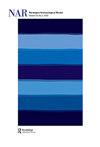Practice, Power and Place: Southern British Perspectives on the Agency of Early Medieval Rulers’ Residences
IF 1.1
3区 历史学
0 ARCHAEOLOGY
引用次数: 3
Abstract
This paper advances understanding of rulership over the fifth to the ninth centuries AD, drawing upon a category of elite settlement from southern Britain known as the great hall complex. Guided by a practice-based conceptual framework, we connect these sites with the embodied regimens, rituals, habits, and activities through which rulership was constituted in the early medieval world. Harnessing recent expanded datasets, we generate insights in three key areas. First, by documenting the significant and sustained antecedent occupation attested at great hall sites, we reveal how rulers exploited the complex multiple pasts of these places to advance symbolic and worldly agendas. Second, we reframe understanding of hall construction as a strategy of elite legitimation by focusing attention on the agency of the skilled practitioners who created these innovative architectural statements and, in doing so, recognize these hitherto neglected specialists as ‘crafters’ of rulership. Third, we use proxies from recently investigated great hall complexes to reconstruct the networks of dependency and interaction which enmeshed these centres. A concluding comparative discussion of southern Britain and Scandinavia contributes shared perspectives on rulers’ residences as a prime arena for the orchestration and creative renewal of early medieval sovereignty.实践、权力与地方:英国南部对中世纪早期统治者住宅代理的看法
本文借鉴了英国南部一类被称为大会堂建筑群的精英定居点,推进了对公元五世纪至九世纪统治的理解。在一个基于实践的概念框架的指导下,我们将这些遗址与中世纪早期形成统治的具体方案、仪式、习惯和活动联系起来。利用最近扩展的数据集,我们在三个关键领域产生了见解。首先,通过记录在大会堂遗址证明的重要和持续的先前占领,我们揭示了统治者如何利用这些地方复杂的多重过去来推进象征性和世俗的议程。其次,我们将对大厅建设的理解重新定义为精英合法化的策略,将注意力集中在创造这些创新建筑声明的熟练从业者的代理上,并在这样做的过程中,将这些迄今为止被忽视的专家视为统治的“工匠”。第三,我们使用最近调查的大会堂综合体的代理来重建这些中心之间的依赖和互动网络。对英国南部和斯堪的纳维亚半岛的最后一次比较讨论,有助于对统治者的住所作为中世纪早期主权协调和创造性更新的主要舞台的共同看法。
本文章由计算机程序翻译,如有差异,请以英文原文为准。
求助全文
约1分钟内获得全文
求助全文
来源期刊

Norwegian Archaeological Review
ARCHAEOLOGY-
CiteScore
2.10
自引率
0.00%
发文量
13
期刊介绍:
Norwegian Archaeological Review published since 1968, aims to be an interface between archaeological research in the Nordic countries and global archaeological trends, a meeting ground for current discussion of theoretical and methodical problems on an international scientific level. The main focus is on the European area, but discussions based upon results from other parts of the world are also welcomed. The comments of specialists, along with the author"s reply, are given as an addendum to selected articles. The Journal is also receptive to uninvited opinions and comments on a wider scope of archaeological themes, e.g. articles in Norwegian Archaeological Review or other journals, monographies, conferences.
 求助内容:
求助内容: 应助结果提醒方式:
应助结果提醒方式:


